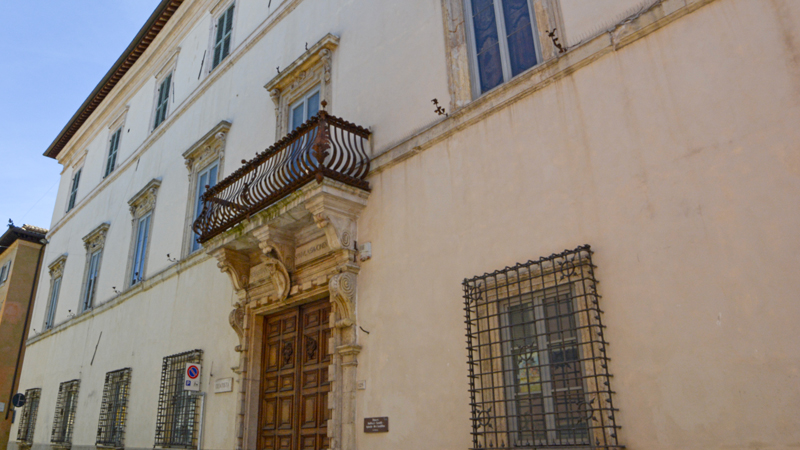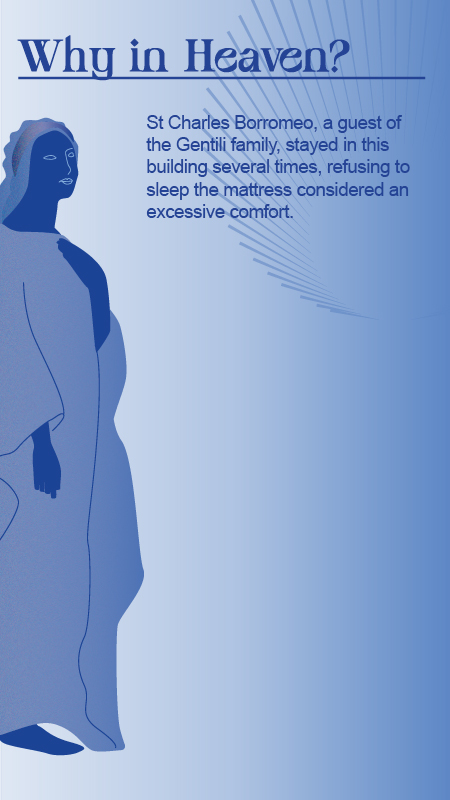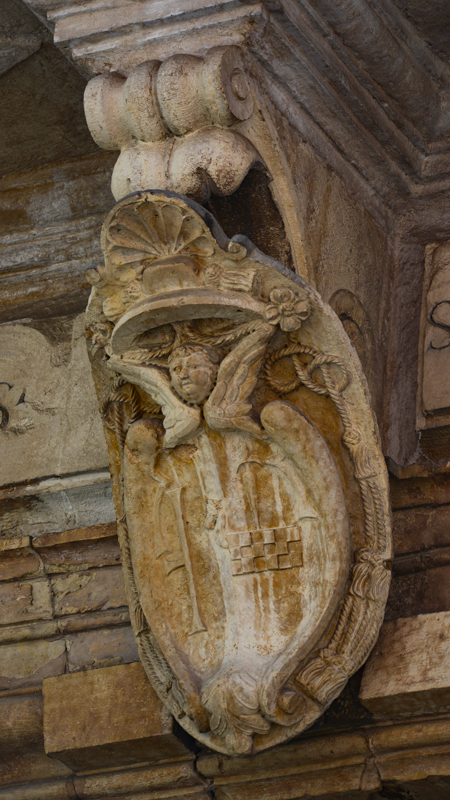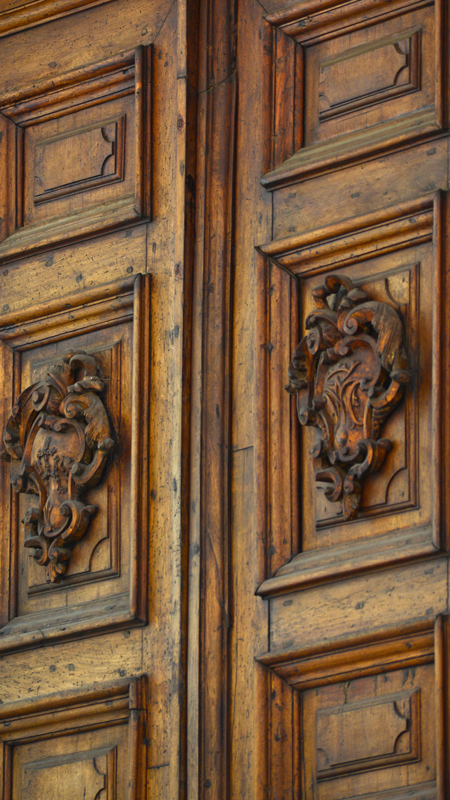The origin of the building dates back to the 15th century and it is located where there was once a complex of houses with an adjoining spinning wheel, tightened around a courtyard. The building was the home of Sigismondo de Comitibus, a distinguished humanist. Sigismondo is known because he commissioned Raphael to paint the Madonna of Foligno, one of his famous works.Then, in the mid-sixteenth century, the palace became the home of Sebastiano Spinola, whose name is preserved in the architrave of the portal, while the prelate coat of arms affixed there belonged to Sebastiano Gentili Spinola, the bishop of Terni between 1656 and 1667. In the inner courtyard numerous coats of arms and a well with an octagonal stone bearing the coat of arms of the de Comitibus are visible. Inside, the vault of the hall on the first floor features frescoes by Giovan Battista Michelini with scenes inspired by Federico Frezzi's Quadriregio, works meant to ennoble Foligno by ideally linking its origins to the origins of Rome. Among the paintings displayed it is worth mentioning the episode of St. Charles Borromeo in Foligno attributed to Giandomenico Mattei, which reminds that the saint was hosted in the palace several times. The furnishings are also valuable.

Il progetto Divina Foligno è sviluppato nell’ambito del “programma Agenda urbana di Foligno Smart community - Comunità, Sostenibilità – Foligno 2020” intervento OT.6 INT_01 “Realizzazione della rete di attrattori culturali attraverso la realizzazione di itinerari culturali e tematici

The Divina Foligno project is promoted and financed as part of the "Urban Agenda of Foligno Smart community - Community, Sustainability - Foligno 2020 program" intervention OT.6 INT_01 "Creation of a network of cultural attractions through the creation of cultural and thematic itineraries"

Copyright © 2022 Landmark. All rights reserved.






